Mary Rose Museum by Wilkinson Eyre and Pringle Brandon Perkins+Will
A museum housing sixteenth century Tudor warship the Mary Rose opens today in an elliptical timber-clad building designed by London office Wilkinson Eyre Architects (+ slideshow).
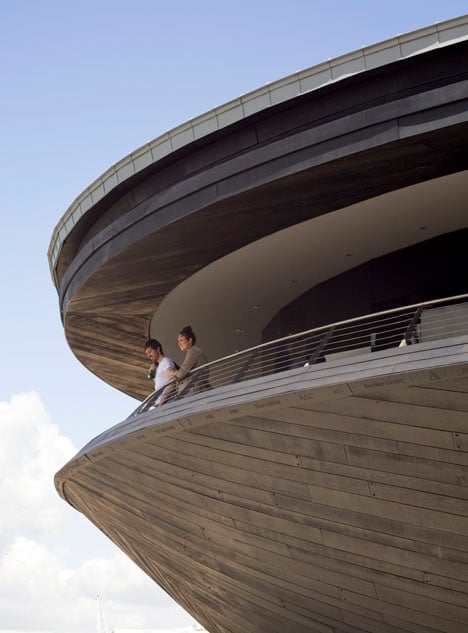
Located in the historic dockyard of Portsmouth, England, the Mary Rose Museum displays part of the ship that served the navy of King Henry VIII for 33 years before spending 437 years undiscovered at the bottom of the sea.
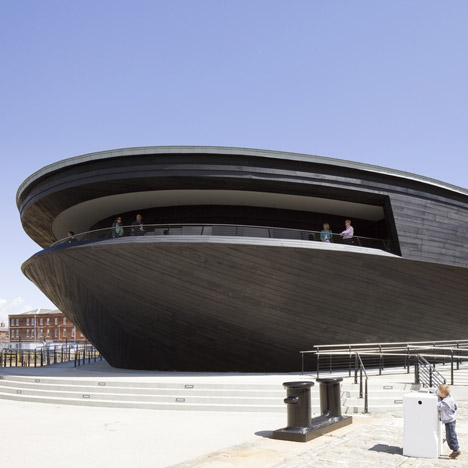
Wilkinson Eyre Architects designed the museum with a stained black exterior, intended to reference traditional English boat sheds, and a disc-shaped metal roof that curves up over its elliptical body.
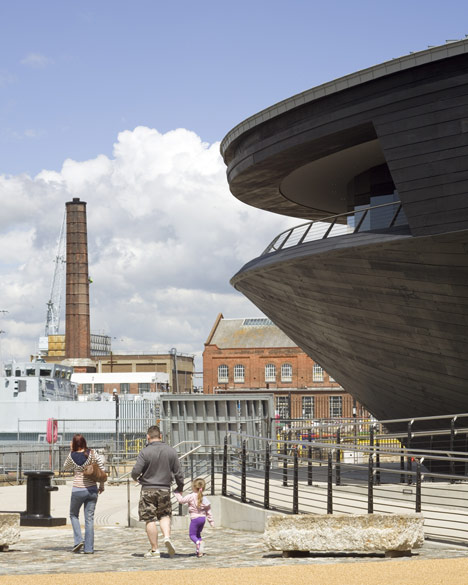
The starboard section of the ship's hull is housed in a temperature-controlled chamber at the heart of the building and can be viewed through internal windows on three different storeys.
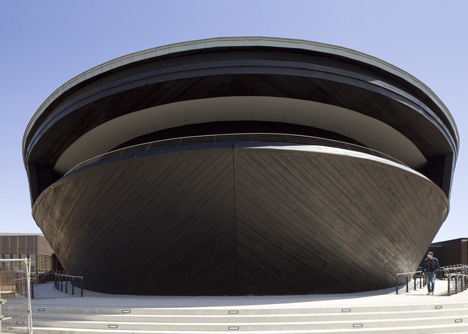
The interiors, by London firm Pringle Brandon Perkins+Will, were designed to recreate the dark and claustrophobic atmosphere found below a ship's deck.
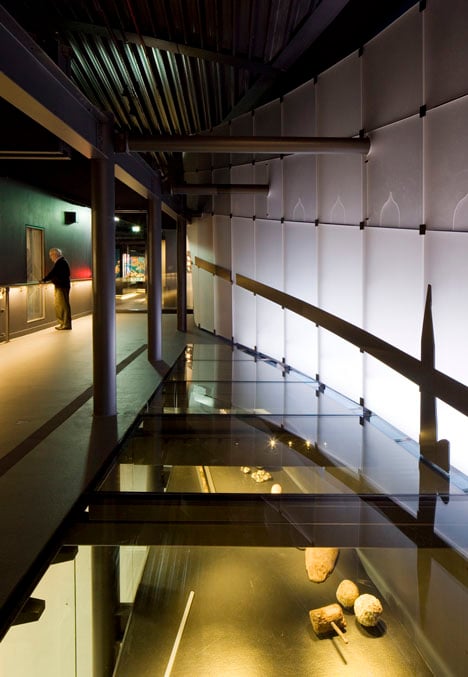
"We designed a museum that would recreate the experience of being on board the ship hundreds of years ago and created a context gallery to highlight its precious contents," said studio principal Chris Brandon.
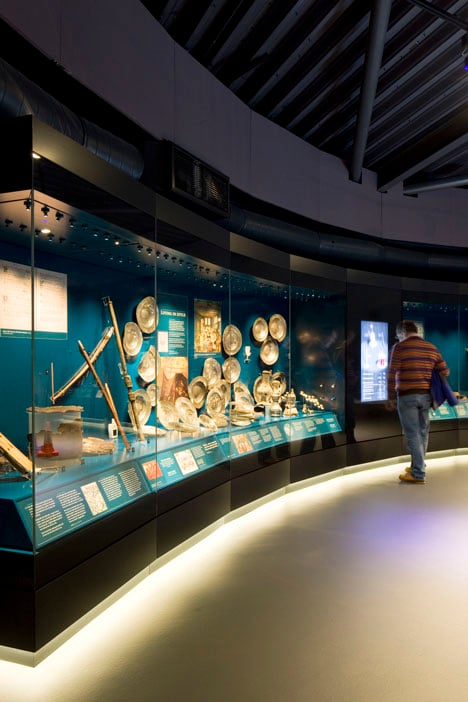
Spaces feature low ceilings and are kept deliberately dark, with lighting directed only onto exhibits and handrails so that visitors can find their way through the galleries.
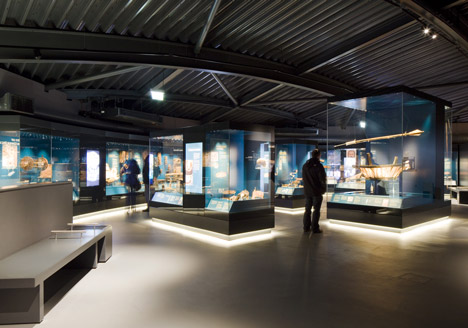
Two smaller extensions branch out from the sides of the museum. The first accommodates a reception, cafe and shop, while the second contains an education centre.
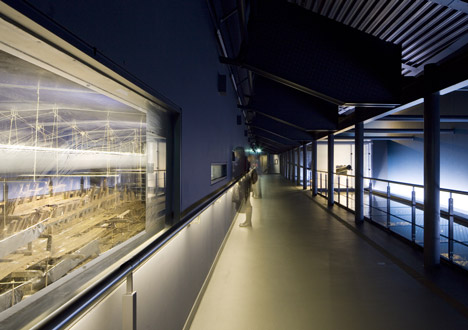
Wilkinson Eyre Architects was the recipient of last year's World Building of the Year prize for its role in the Gardens by the Bay tropical garden in Singapore. The firm also recently won a competition to design a skyscraper on Sydney's harbourfront.
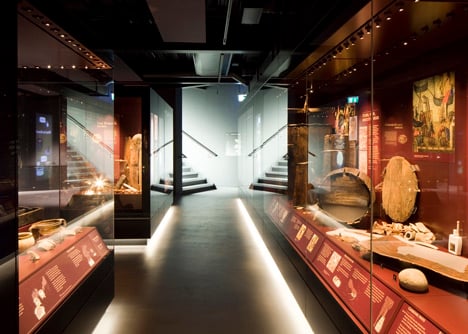
See more architecture by Wilkinson Eyre Architects »
See more museums on Dezeen »
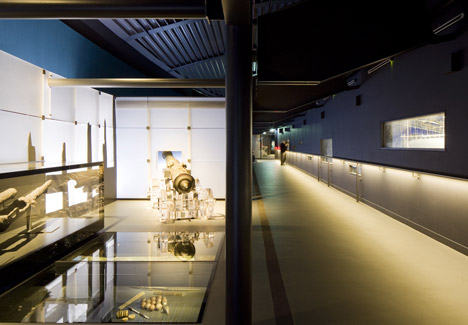
Photography is by Richard Chivers.
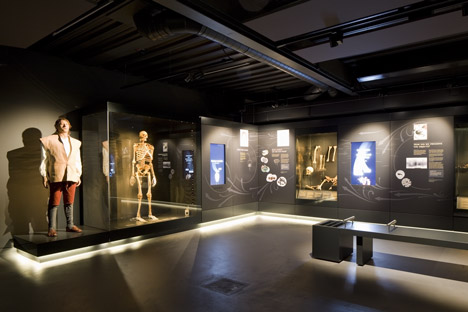
Here's some more information from the design team:
Award-winning architects bring the Mary Rose back to life and create a new centrepiece for Portsmouth's Historic Dockyard
The design of the new £27m Mary Rose Museum - by Wilkinson Eyre Architects (architect and design team leader) and Pringle Brandon Perkins+Will (architect for the interior) - is a story of collaboration, with the project team combining delicate conservation, contemporary architecture and specialist technical expertise. The result is a truly unique design that reveals the secrets of the famous Tudor ship, marking 30 years since the hull of the Mary Rose was raised from the Solent where she lay undiscovered for 437 years.
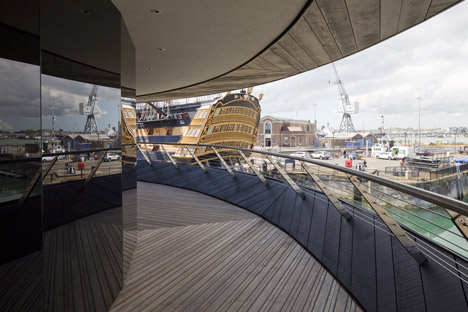
Like crafting a jewellery box to house a precious gem, the design team has together created a building and interior that protects and showcases the Mary Rose. Designed from the inside-out, the Museum building takes many of its cues from the historic ship, allowing its hull, artefacts and exhibitions to take centre stage and create a visitor experience befitting this remarkable piece of history.
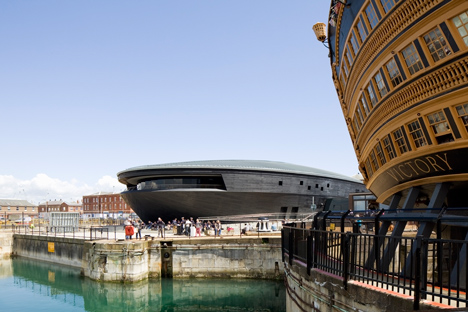
At the heart of the project, within a carefully controlled 'hot box' environment, is the starboard section of the hull of the Mary Rose. Alongside it, a virtual port-side hull has been created over three levels to view the ship and house the context gallery. Encasing the Mary Rose and the largest collection of Tudor artefacts in the world is an architectural form that alludes to the historic significance of the Museum's collection and announces the arrival of a major new cultural attraction.
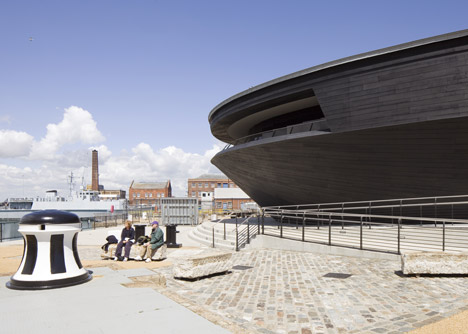
Chris Wilkinson, Founding Director at Wilkinson Eyre Architects, said: "When you have a treasure like the Mary Rose, which continues to capture the world's imagination, the architecture of the building takes a supporting role. However, the building has a very significant part to play in projecting the Museum and its remarkable collection to the world, creating intrigue and heightening the visitor experience of this major cultural attraction."
Chris Brandon, Principal of Pringle Brandon Perkins+Will (PBP+W), said: "This museum is unique – the only one in the world to take its inspiration from the archaeological finds of the Mary Rose and the ship herself. Our role was to create a showcase for The Mary Rose and her artefacts befitting their significance, so we designed a museum that would recreate the experience of being on board the ship hundreds of years ago and created a context gallery to highlight its precious contents. Coming from a marine archaeological background, finally I can unite my two passions in life - architecture and marine archaeology. I hope visitors to the Mary Rose Museum are as excited by the end result as I am."
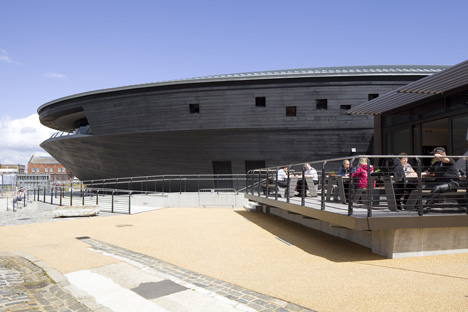
The architecture
When working with such a fascinating artefact like the Mary Rose, the architecture needs to complement rather than distract. In this case, the challenge was finding the right architectural language to help articulate the story being told by the Museum, whilst adding a confident piece of contemporary architecture to Portsmouth Historic Dockyard.
The simple, pure elliptical form of the new building is derived from toroidal geometry echoing the shape of the Mary Rose; its timber is reminiscent of the ship's historic hull, showcasing the innovative Carvel construction methods of the 16th Century. Further embedding the building in its maritime heritage, the timber has been stained black to reflect England's vernacular boat shed architecture.
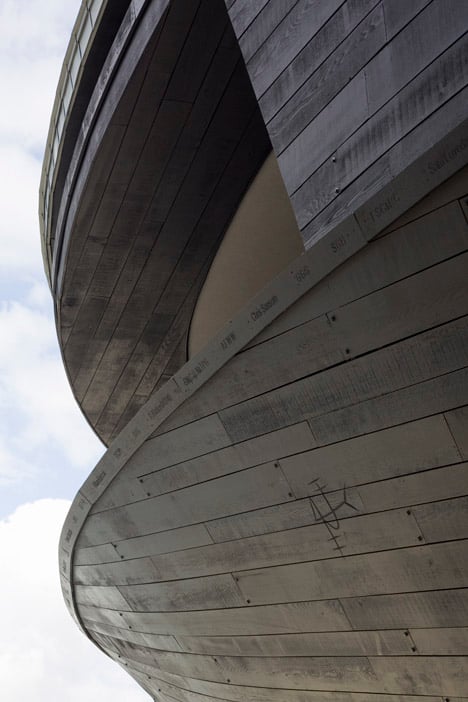
The challenges of the site's historic context, adjacent to HMS Victory and the listed Admiralty buildings, are compounded by the nature of the site itself: a late 18th Century Dry Dock that is listed as a Scheduled Ancient Monument. Care has been taken to keep the height of the Museum as low as possible to remain sensitive to the proportions and scale of the surrounding buildings. The low-profile, shell-shaped metal roof follows this logic and reduces the internal volume of space which has to be environmentally controlled to precise standards to ensure the conservation of the hull.
Two rectangular pavilions are attached to each side of the main building, one housing the main entrance reception, café and shop, and the other occupied by the Learning Centre and main plant room. The overall composition is a piece of contemporary architecture, an elegantly simple form with an air of mystery that encourages visitors to enter and explore.
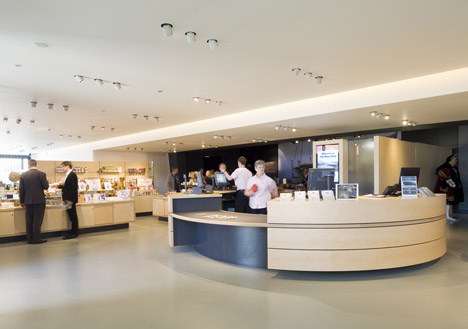
The interior
The essence of the design of the interior evolved from the frozen moment in time seconds before the Mary Rose capsized and sank on 19th July 1545. Following the painstaking archaeological excavation and recording of the exact location of every find, the project team could see inside the Mary Rose and reunite the original contents - fittings, weaponry, armament and possessions – deck-by-deck.
A virtual hull was constructed to represent the missing port side with all the guns on their original gun carriages, cannonballs, gun furniture, stores, chests, rope and rigging. Visitors to the Museum walk in between the conserved starboard section of the hull and the virtual hull on three levels, seeing all the main shipboard material in context as though they are on board the Mary Rose. The end galleries then interpret the context gallery deck-by-deck in more conventional museum display cases, designed by Land Design Studio.
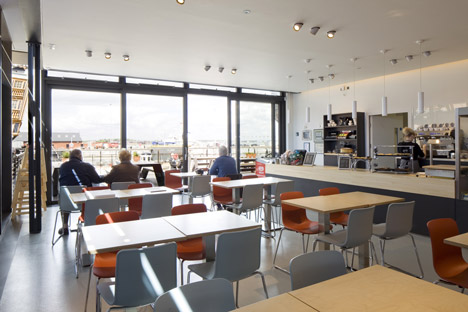
The atmosphere of being on the ship is further enhanced by the walkways following the shape of the deck from stern to bow and low ceilings on the lower deck. The Museum spaces are deliberately dark with daylight excluded and the only lighting either focused on the objects or concealed under the walkway handrail, lighting the space and re-creating the dark claustrophobic spaces below decks.
Two museum interiors have been designed – the first for 2013 to 2017/18 and the second for the period after 2018. Initially the Mary Rose will remain in her protective cocoon while she is dried and be seen through windows on the three levels of the context gallery and the lifts. However, on completion of the conservation process, the context gallery walkways will be opened and the Mary Rose and all her contents will be seen together.